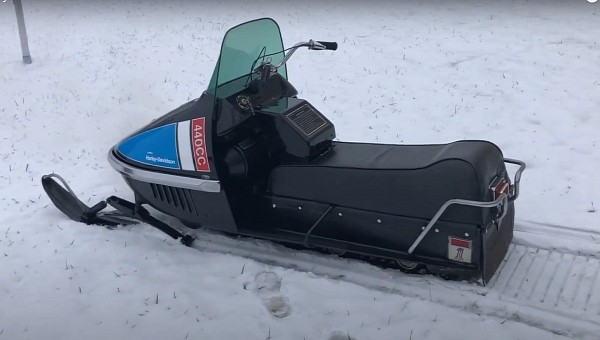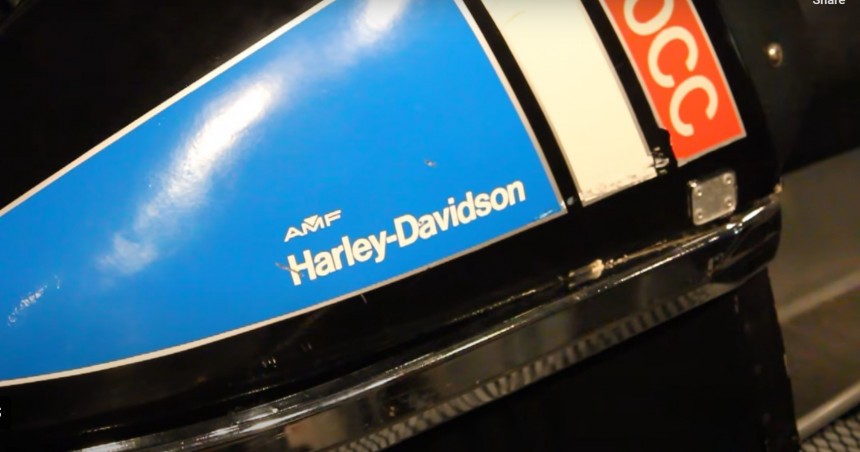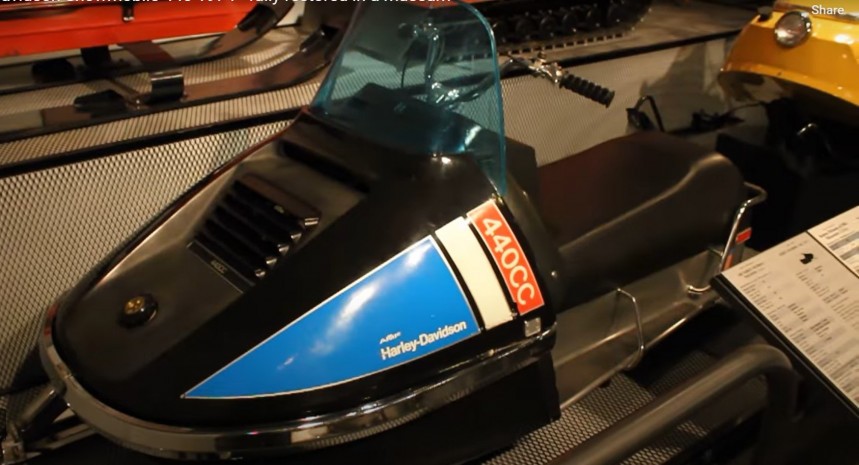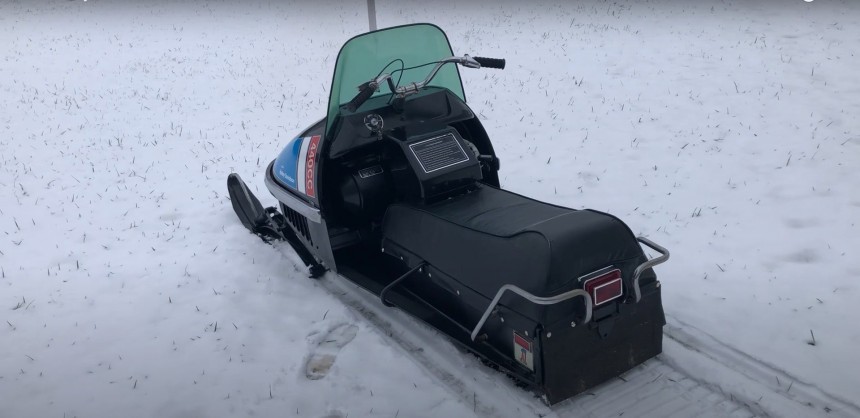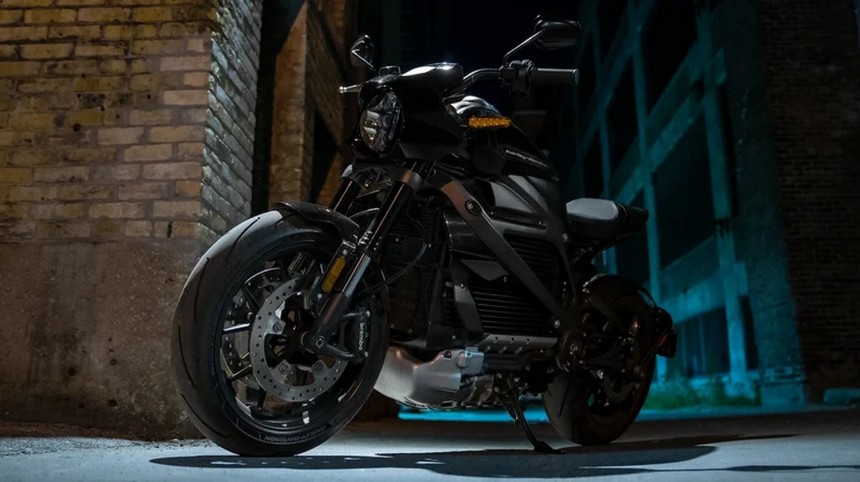The 70s were somewhat of a dark decade in the U.S. with the ongoing war in Vietnam, the Watergate scandal, runaway inflation, and the deterioration of America's aura throughout the world.
Sure, the United States was powerful and wealthy, but the decade was a period of profound struggle for both consumers and businesses alike as the nation was transforming from a manufacturing to a service-oriented economy. Businesses facing hard times often resort to drastic measures to stay liquid, from paring down their workforce and scaling back production to spinning off product divisions or selling the business altogether.
Milwaukee, Wisconsin-based Harley-Davidson entered the tumultuous 70s having sold the entire company in 1969 to American Machine and Foundry (AMF) based in Shelby, Ohio. The move was a curious one and left the then 66-year-old motorcycle in the hands of a company more known for making bowling pins. Founders William S. Harley and Arthur Davidson were surely spinning in the heavens above.
AMF did as companies do; streamlining production and cutting its workforce. The backlash included a labor strike that severely impacted the quality of the products rolling out of the Milwaukee factory.
If that was not bad enough, the Japanese 'Big Four,' Kawasaki, Yamaha, Suzuki, and Honda, had begun to establish themselves as an exciting, less expensive, and more reliable alternative to the homegrown Harleys. The Harley name was dragged through the mud and developed several disparaging nicknames; "Hardly Ableson," "Hardly Driveable," and "Hogly Ferguson." The latter would later be shortened to Hog, which is still used today to describe a Harley motorcycle, but with a positive image. In addition, HOG (Harley Owners Group) would become the company's stock symbol in 2006.
Sometimes when companies realize they cannot put out a quality product the business was built around, they stupidly diversify, and that is exactly what AMF did in 1971 with a Harley-Davidson-branded snowmobile. It was not the type of diversification AMF plunged into without prior knowledge.
Its Western Tool Division manufactured and sold Sno-Clipper and the Ski-Daddler Power Sleds in the 60s equipped with AMF-owned Italian-made Aermacchi’s engines. By 1968, the Ski-Daddler was being made at AMF's York, Pennsylvania factory, where some Harley-Davidson motorcycles are still made today.
AMF dropped the Ski-Daddler name and rebranded them Harley-Davidson Snowmobiles. The debut model was equipped with a 30 horsepower 398 cc engine and came with either a pull or electric start. The second and last offering was a more powerful 440 cc model with the same start features offered.
The plunge into the frigid waters of snowmobile manufacturing came to an end after just four years when in 1975, after 10,000 were made, the company iced production.
Harley-Davidson snowmobiles themselves were very crude vehicles indeed, with no fuel gauge or kill switch for emergency cut-off. They lacked power and performance and could not compete with Polaris. The sleds were simply well-branded slugs that only served to tarnish the Harley brand. Today, these sleds are more popular with collectors than they were back in the day with snowmobilers and can be found in numerous museums.
The addition of adding snowmobiles under the Harley-Davidson brand was an epic failure in every regard and quite literally brought Harley-Davidson to the very brink of financial ruin. Harley-Davidson is one of only two American motorcycle companies (the other is Indian Motorcycle) to have survived the Great Depression, but it barely emerged from the 70s.
AMF would perform the noble act of saving one of the most iconic motorcycle brand's in the world by selling it to a group of investors in 1981 for a cool $80 million ($135 million in 2022 dollars).
Coupled with operational improvements, Harley-Davidson's survival and resurgence was aided by a significant gesture courtesy of the U.S. Government. In 1983, the Reagan administration granted tariff protection for large-displacement motorcycles that stymied competition coming from the Big Four, buying Harley-Davidson time to implement new strategies and right its ship.
The company's remarkable turnaround can also be attributed to a bold decision to not follow the trends that had become popular with the Japanese brands. Instead, Harley-Davidson reinvented itself not with the new but with the old, relying on older models to influence new models' design and engineering. The retro-look with advanced, outsourced quality components worked, and the company began to gain momentum by the mid-80s.
Despite economic headwinds leading to financial issues over the last 20-plus years, the company today is venturing into the electric age with its Live Wire bike alongside the gas-powered models Harley-Davidson fans have loved for decades.
As with many legacy companies, Harley-Davidson has a past with significant highs and even lower lows but remains today with a legacy that is second to none in motorcycle manufacturing and branding throughout the world. The Harley-Davidson motorcycle brand is as well recognized as Coca-Cola in all corners of the globe.
Milwaukee, Wisconsin-based Harley-Davidson entered the tumultuous 70s having sold the entire company in 1969 to American Machine and Foundry (AMF) based in Shelby, Ohio. The move was a curious one and left the then 66-year-old motorcycle in the hands of a company more known for making bowling pins. Founders William S. Harley and Arthur Davidson were surely spinning in the heavens above.
AMF did as companies do; streamlining production and cutting its workforce. The backlash included a labor strike that severely impacted the quality of the products rolling out of the Milwaukee factory.
Sometimes when companies realize they cannot put out a quality product the business was built around, they stupidly diversify, and that is exactly what AMF did in 1971 with a Harley-Davidson-branded snowmobile. It was not the type of diversification AMF plunged into without prior knowledge.
Its Western Tool Division manufactured and sold Sno-Clipper and the Ski-Daddler Power Sleds in the 60s equipped with AMF-owned Italian-made Aermacchi’s engines. By 1968, the Ski-Daddler was being made at AMF's York, Pennsylvania factory, where some Harley-Davidson motorcycles are still made today.
The plunge into the frigid waters of snowmobile manufacturing came to an end after just four years when in 1975, after 10,000 were made, the company iced production.
Harley-Davidson snowmobiles themselves were very crude vehicles indeed, with no fuel gauge or kill switch for emergency cut-off. They lacked power and performance and could not compete with Polaris. The sleds were simply well-branded slugs that only served to tarnish the Harley brand. Today, these sleds are more popular with collectors than they were back in the day with snowmobilers and can be found in numerous museums.
AMF would perform the noble act of saving one of the most iconic motorcycle brand's in the world by selling it to a group of investors in 1981 for a cool $80 million ($135 million in 2022 dollars).
Coupled with operational improvements, Harley-Davidson's survival and resurgence was aided by a significant gesture courtesy of the U.S. Government. In 1983, the Reagan administration granted tariff protection for large-displacement motorcycles that stymied competition coming from the Big Four, buying Harley-Davidson time to implement new strategies and right its ship.
The company's remarkable turnaround can also be attributed to a bold decision to not follow the trends that had become popular with the Japanese brands. Instead, Harley-Davidson reinvented itself not with the new but with the old, relying on older models to influence new models' design and engineering. The retro-look with advanced, outsourced quality components worked, and the company began to gain momentum by the mid-80s.
As with many legacy companies, Harley-Davidson has a past with significant highs and even lower lows but remains today with a legacy that is second to none in motorcycle manufacturing and branding throughout the world. The Harley-Davidson motorcycle brand is as well recognized as Coca-Cola in all corners of the globe.
A little throwback to one of our wilder vehicles.?
— Harley-Davidson (@harleydavidson) January 7, 2023
???? @HDMuseum Archives?#HarleyDavidson #HDMuseum #snowmobile pic.twitter.com/O1sfZTxF4e
